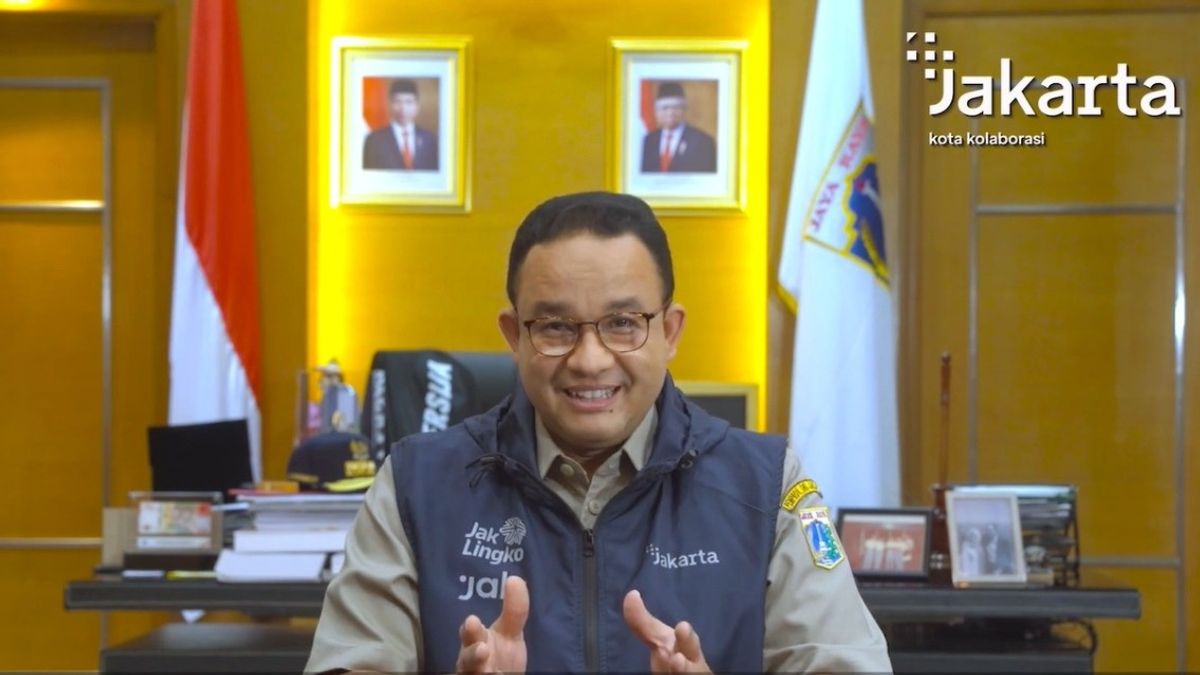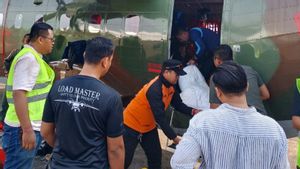JAKARTA - DKI Jakarta Governor Anies Baswedan likens the COVID-19 condition in the Capital City in the past month to a house with a leaky roof and in need of repair.
A month ago, Jakarta's COVID-19 situation was alarming. This was seen when Anies said that his condition was critical because cases spiked at the beginning of last July, with a trembling voice.
Anies said DKI prepared a bucket to accommodate the leak, along with filling the hole in the roof. If interpreted, DKI over the past month has increased its capacity for treating COVID-19 patients while implementing the restrictions in the Emergency PPKM and Level 4 PPKM.
Yesterday, July 26, Anies again conveyed the conditions for handling COVID-19. The way it is delivered has changed. In a video recorded from his office, Anies conveyed the condition of COVID-19 with a smiling face. He said the precarious condition a month ago had changed towards improvement.
"Last week, three weeks ago, last month, we saw Jakarta heading into a precarious condition. Now we see Jakarta starting to move away from that precarious condition," said Anies.
Anies said that currently the daily number of COVID-19 cases had begun to decline. Active cases in the capital also decreased by almost 50 percent from the condition 10 days ago.
"The number of active cases in Jakarta continues to decrease. Previously, we had reached more than 100 thousand, even on July 16, 2021, there were 113,000 active cases and yesterday our active cases had dropped to 64 thousand," he said.
Anies said that the decline in active cases was consistent with a downward trend in several other parameters, such as the weekly positivity rate or the rate of positive cases per number of specimens examined. Our positivity rate, which was originally around 45 percent, is now in the range of 25 percent.
The same goes for the COVID-19 death rate. Anies said the COVID-19 protocol funerals, which once reached more than 350 funerals per day, have now dropped below 200 per day.
Anies admitted that he had toured a number of hospitals and health centers in Jakarta, such as Budi Asih Hospital and Duren Sawit Hospital. In addition, he also monitors the condition of the hospital via CCTV.
He saw the difference in conditions before the implementation of Emergency PPKM with today. He said, there were no more patients queuing in the ER lobby to wait for the treatment room.
"The situation is much different from when we came in previous times. At that time, the hospital was very full, even the front hall of the ER was filled with queues of patients who were going to the ER. The queues for entering the ER were full, the ER was full, the hospitalization was full, the ICU is also full," said Anies.
"Well, now the corridors of the ER are empty, patients can go directly to the ER. There are only a few patients in the ER, and this situation can be seen in many hospitals in Jakarta," he continued.
However, Anies emphasized that the pandemic situation in Jakarta is not safe at all. This can be seen from the number of active cases which is still relatively high, which is still touching the figure of 64,000 active cases with a positivity rate of 25 percent.
"We have to be careful in interpreting it (the decline in the pandemic situation). The 64,000 active cases are still 2 times higher than the peak of the first wave last year. The 25 percent positivity rate is still far above the WHO ideal recommendation, which is below 5 percent," said Anies.
Even though the ER queue has dispersed, the ICU is still crowded, while the pressure is slowly easing. This means that the downward trend in cases has been seen, but the situation for handling the pandemic is still far from ideal.
"This means don't be careless, don't slack off. Don't let the wave of improvement that is now starting to be felt and stop or even turn around and then rise again. Why? Because we are careless because we are slack because we are not disciplined," explained Anies.
Remembering the precarious conditions a month agoOn July 2, Anies held a coordination meeting with the ranks of ASN and BUMD DKI to prepare for the implementation of emergency PPKM.
In the meeting, Anies described DKI Jakarta as currently in a precarious state since the last few years. To his subordinates, Anies likened the ranks of the DKI Provincial Government to the cockpit crew of the plane and the public to the passengers.
"We, who are in this (meeting) room, are the people who are in the cockpit who are in the cockpit of the plane. We must direct all passengers on the plane because the passengers do not know the complete condition, we know this complete condition. who is in this cockpit," said Anies on Friday, July 2.
Still in the picture on the plane, Anies asked all ranks to fasten their seat belts because they will enter the turbulence or shock area. That is, the condition of COVID-19 in Jakarta is in a precarious state.
"We have to tell everyone. We will enter a turbulent area. Everyone, fasten your seat belts. If a flight enters a turbulent area, Jakarta is now entering a period of turbulence, facing a storm and we must inform all our citizens to be prepared," explained Anies. .
At that time, Anies asked all ranks to carry out three priorities for handling COVID-19 during emergency PPKM. These include rescuing residents who have been exposed to COVID-19, protecting people who have not been exposed to them from being exposed, and helping those who have difficulty meeting their basic daily needs.
The English, Chinese, Japanese, Arabic, and French versions are automatically generated by the AI. So there may still be inaccuracies in translating, please always see Indonesian as our main language. (system supported by DigitalSiber.id)










